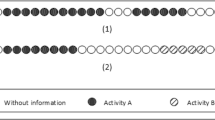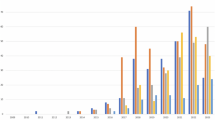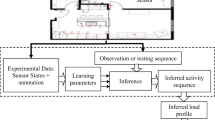Abstract
Computer vision techniques having the capability to inspect human behavior are gaining fame. The conception of intelligent abnormal human activity visual identification has raised the standards of monitoring systems, situation appreciation, homeland protection, and intelligent automated surroundings. Numerous scholars are submitting through past years their inspection regarding behavior detection. Nevertheless, abnormal human activity is dissimilar in itself owing to the factors as (a) the central meaning of anomaly (b) feature demonstration of an anomaly, (c) its application, and henceforth (d) the dataset. Human behavior detection in automatic control of home appliances is the mission of spotting a human being’s behavior patterns so as to construct harmless surroundings for that human being. It is beneficial in constructing surroundings for older grown human being or to aid any human being in his/her everyday life. The motive of the put forward study is to establish a model detects the behavior of grown-up people living in a smart house, to inspect abnormal behavior and alert relatives or a caretaker aware if assistance is required. The foremost goal of exploiting hierarchical hidden Markov models is foretelling whether the contemporary activity is normal or abnormal. Hierarchical hidden Markov models are being exploited as it is a statistical method that works well with a diminutive dataset or unsatisfactory training data. In the lead, the statuses of the hierarchical hidden Markov models generate chain of surveillance symbols rather than solitary surveillance symbols as the same case as it is for the standard hidden Markov models statuses. Results acquired throughout that model were encouraging as they decreased both cost and computational time.
Access this chapter
Tax calculation will be finalised at checkout
Purchases are for personal use only
Similar content being viewed by others
References
Riboni D, Bettini C, Civitarese G, Janjua ZH, Helaoui R (2015) Fine-grained recognition of abnormal behaviors for early detection of mild cognitive impairment. In: 2015 IEEE international conference on pervasive computing and communications (PerCom). IEEE, pp 149–154
Lundström J, Järpe E, Verikas A (2016) Detecting and exploring deviating behaviour of automatic control of home appliances residents. Expert Syst Appl 55:429–440
Nigam S, Singh R, Misra AK (2019) A review of computational approaches for human behavior detection. Arch Comput Techniq Eng 26(4):831–863
Dhiman C, Vishwakarma DK (2019) A review of state-of-the-art techniques for abnormal human activity recognition. Eng Appl Artif Intell 77:21–45
Arifoglu D, Bouchachia A (2017) Activity recognition and abnormal behaviour detection with recurrent neural networks. Procedia Comput Sci 110:86–93
Garcia-Constantino M, Konios A, Nugent C (2018) Modelling activities of daily living with petri nets. In: 2018 IEEE international conference on pervasive computing and communications workshops (PerCom Workshops). IEEE, pp 866–871
Garcia-Constantino M, Konios A, Ekerete I, Christopoulos SR, Shewell C, Nugent C, Morrison G (2019) Probabilistic analysis of abnormal behavior detection in activities of daily living. In: 2019 IEEE international conference on pervasive computing and communications workshops (PerCom Workshops). IEEE, pp 461–466
Hoque E, Dickerson RF, Preum SM, Hanson M, Barth A, Stankovic JA (2015) Holmes: a comprehensive anomaly detection system for daily in-home activities. In: 2015 international conference on distributed computing in sensor systems. IEEE, pp 40–51
Fahad LG, Rajarajan M (2015) Anomalies detection in smart-home activities. In: 2015 IEEE 14th international conference on machine learning and applications (ICMLA). IEEE, pp 419–422
Jakkula V, Cook DJ, Crandall AS (2007) Temporal pattern discovery for anomaly detection in a automatic control of home appliances.
Novák M, Biňas M, Jakab F (2012) Unobtrusive anomaly detection in presence of elderly in a smart-home surroundings. In: 2012 ELEKTRO. IEEE, pp 341–344
Novák M, Jakab F, Lain L (2013) Anomaly detection in user daily patterns in smart-home surroundings. J Sel Areas Health Inform 3(6):1–11
Lotfi A, Langensiepen C, Mahmoud SM, Akhlaghinia MJ (2012) Automatic control of home appliances for the elderly dementia sufferers: identification and prediction of abnormal behaviour. J. Ambient Intell Humanized Comput 3(3):205–218
Forkan ARM, Khalil I, Tari Z, Foufou S, Bouras A (2015) A context-aware approach for long-term behavioural change detection and abnormality prediction in ambient assisted living. Pattern Recogn 48(3):628–641
Arifoglu D, Bouchachia A (2019) Detection of abnormal behaviour for dementia sufferers using convolutional neural networks. Artif Intell Med 94:88–95
Jakkula V, Cook D (2011) Detecting anomalous sensor events in automatic control of home appliances data for enhancing the living experience. In: Workshops at the twenty-fifth AAAI conference on artificial intelligence
Yahaya SW, Langensiepen C, Lotfi A (2018) Anomaly detection in activities of daily living using one-class support vector machine. In: UK workshop on computational intelligence). Springer, Cham, pp 362–371
Dreiseitl S, Osl M, Scheibböck C, Binder M (2010) Outlier detection with one-class SVMs: an application to melanoma prognosis. In: AMIA annual symposium proceedings, vol. 2010. American Medical Informatics Association, p 172
Theissler A (2017) Multi-class novelty detection in diagnostic trouble codes from repair shops. In: 2017 IEEE 15th international conference on industrial Informatics (INDIN). IEEE, pp 1043–1049
Author information
Authors and Affiliations
Corresponding author
Editor information
Editors and Affiliations
Rights and permissions
Copyright information
© 2021 The Author(s), under exclusive license to Springer Nature Singapore Pte Ltd.
About this paper
Cite this paper
Abdel-Samee, B.E. (2021). Abnormal Behavior Forecasting in Smart Homes Using Hierarchical Hidden Markov Models. In: Hassanien, A.E., Darwish, A., Abd El-Kader, S.M., Alboaneen, D.A. (eds) Enabling Machine Learning Applications in Data Science. Algorithms for Intelligent Systems. Springer, Singapore. https://doi.org/10.1007/978-981-33-6129-4_25
Download citation
DOI: https://doi.org/10.1007/978-981-33-6129-4_25
Published:
Publisher Name: Springer, Singapore
Print ISBN: 978-981-33-6128-7
Online ISBN: 978-981-33-6129-4
eBook Packages: Intelligent Technologies and RoboticsIntelligent Technologies and Robotics (R0)




